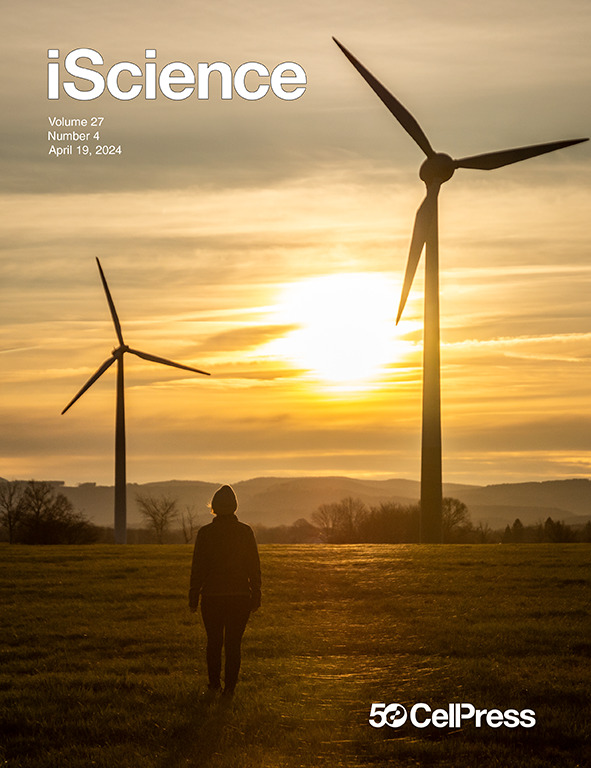Evaluating potential power output of terrestrial thermoradiative diodes with atmospheric modeling
IF 4.6
2区 综合性期刊
Q1 MULTIDISCIPLINARY SCIENCES
引用次数: 0
Abstract
A thermoradiative diode is a device that can generate power through thermal emission from the warm Earth to the cold night sky. Accurate assessment of the potential power output requires knowledge of the downwelling radiation from the atmosphere. Here, accurate modeling of this radiation is used alongside a detailed balance model of a diode at the Earth’s surface temperature to evaluate its performance under nine different atmospheric conditions. In the radiative limit, these conditions yield power densities between 0.34 and 6.5 W.m−2, with optimal bandgaps near 0.094 eV. Restricting the angles of emission and absorption to less than a full hemisphere can marginally increase the power output. Accounting for non-radiative processes, we suggest that if a 0.094 eV device would have radiative efficiencies more than two orders of magnitude lower than a diode with a bandgap near 0.25 eV, the higher bandgap material is preferred.

利用大气建模评估地面热辐射二极管的潜在功率输出
热辐射二极管是一种可以通过从温暖的地球向寒冷的夜空发射热辐射来发电的装置。要准确评估潜在的功率输出,需要了解大气层的下沉辐射。在此,我们将这种辐射的精确建模与地球表面温度下二极管的详细平衡模型结合使用,以评估其在九种不同大气条件下的性能。在辐射极限条件下,这些条件产生的功率密度在 0.34 到 6.5 W.m-2 之间,最佳带隙接近 0.094 eV。将发射角和吸收角限制在小于一个完整半球的范围内,可以略微提高功率输出。考虑到非辐射过程,我们建议,如果 0.094 eV 器件的辐射效率比带隙接近 0.25 eV 的二极管低两个数量级以上,则优先选择带隙较高的材料。
本文章由计算机程序翻译,如有差异,请以英文原文为准。
求助全文
约1分钟内获得全文
求助全文
来源期刊

iScience
Multidisciplinary-Multidisciplinary
CiteScore
7.20
自引率
1.70%
发文量
1972
审稿时长
6 weeks
期刊介绍:
Science has many big remaining questions. To address them, we will need to work collaboratively and across disciplines. The goal of iScience is to help fuel that type of interdisciplinary thinking. iScience is a new open-access journal from Cell Press that provides a platform for original research in the life, physical, and earth sciences. The primary criterion for publication in iScience is a significant contribution to a relevant field combined with robust results and underlying methodology. The advances appearing in iScience include both fundamental and applied investigations across this interdisciplinary range of topic areas. To support transparency in scientific investigation, we are happy to consider replication studies and papers that describe negative results.
We know you want your work to be published quickly and to be widely visible within your community and beyond. With the strong international reputation of Cell Press behind it, publication in iScience will help your work garner the attention and recognition it merits. Like all Cell Press journals, iScience prioritizes rapid publication. Our editorial team pays special attention to high-quality author service and to efficient, clear-cut decisions based on the information available within the manuscript. iScience taps into the expertise across Cell Press journals and selected partners to inform our editorial decisions and help publish your science in a timely and seamless way.
 求助内容:
求助内容: 应助结果提醒方式:
应助结果提醒方式:


